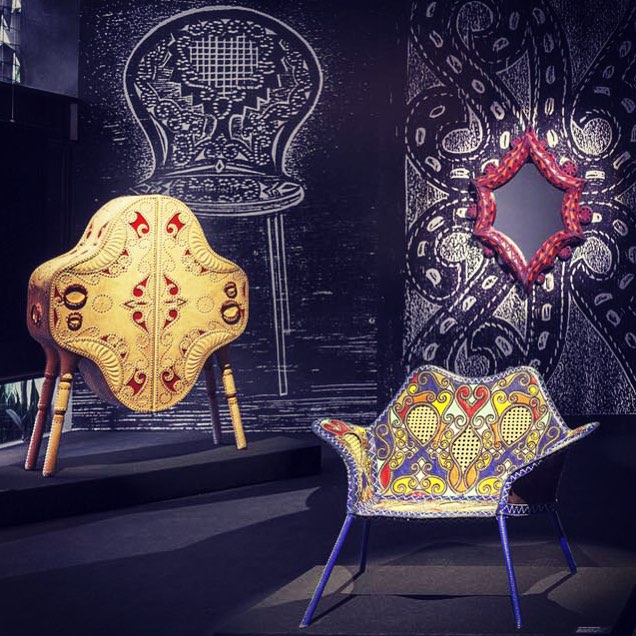Espedito Seleiro: the north-eastern leatherwear style

Espedito Seleiro confirms: “I like to do things differently; doing the same is very easy. ” The master is the most renowned leather craftsman in Brazil. Born in Nova Olinda, Ceara, son, grandson and great-grandson of saddlers, he is a reference in talent and creativity in the use of leather, from choosing the composition of the colours to the detailed carvings in the production of saddles, shoes and handbags. He learned his craft from Antonio Seleiro, his father, a popular man in Cariri for having produced shoes for Lampião, the king of Cangaço*.
The look produced by Expedito Seleiro for TV series and movies helped to highlight the Cowboy jerkin, a North-eastern icon, and link the production to his name. Besides the cinema, the beauty of the carvings in leather and outlaw fashion was spread in Brazil by the singer Luiz Gonzaga. The popular artist from Pernambuco – with millions of records sold – always used to wear the traditional outfit in honour of the North-eastern cowboys.

(film “The man who challenged the devil”, by Moacyr Goes, released in 2007)
Espedito’s debut in the fashion world was in the 1980s, when the director of an educational organization in Nova Olinda entered his shop and asked Espedito to replicate one of Lampião’s sandals, on display in a local museum.
The master craftsman, even without ever having made a sandal, agreed and liked because the design and the use of colours was different from the sandals at that time. And so he began investing in making shoes and handbags, earning a lot more money from it than doing “cowboy stuff,” as he says. In 2006, came the boom. Espedito’s shoes caught the attention of fashion designers after the brand used some pieces in the Fashion Week show in that year.

Cavalera Parade 2006
Espedito Seleiro was recognized as “Master of Culture” by the Department of Culture of Ceará, and also received in 2011 the Order of Cultural Merit – Honour granted by the Ministry of Culture in 2013, was honoured at the Casa Museum in São Paulo, through the exhibition: “Espedito Seleiro – from the saddle to the catwalk”.
In April this year, the master craftsman has partnered with two Brazilian designers of international fame to create the collection “Cangaço”, a limited edition furniture line for the company Firma Casa, that combines the classic braided straw of Viennese Michel Thonet (popularized in the 19th century) with master Espedito’s leather. The combination of straw and leather was mediated by Fernando and Humberto, the celebrated Campana Brothers.
In this year’s launch of Casa Cariri 2015, with 5,000 square meters and more than 40 environments, in Juazeiro do Norte, Ceará, Espedito Master will be honoured (July 21 to August 16) on his merits in the fields of culture, fashion and design.

Furniture made with the Campana Brothers.
Below is a video about the work of the Leather Master.
* Cangaço – north-eastern nomadic movement that had its heyday between the late nineteenth and early twentieth centuries.
** Cangaceiros – name given to members of these groups – considered the most dangerous bandits of the Brazilian sertao. The word “cangaceiro” alludes to the yoke (canga), the name given to a piece of wood used in animals for carrying utensils. These men, walkers, carred many utensils, objects and weapons. Because of the bravery and daring, these men were often regarded as heroes among the population of small towns and villages of the sertao, who faced the indifference of the authorities and lived in extreme poverty.
 Organic and Natural Cotton Color
Organic and Natural Cotton Color



